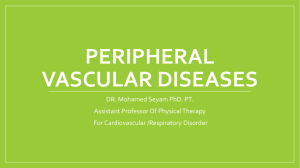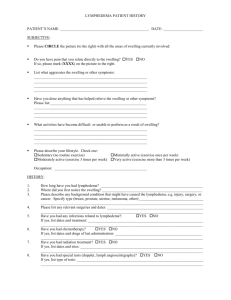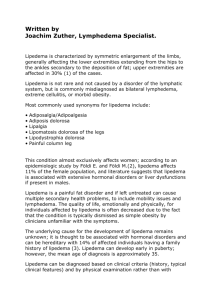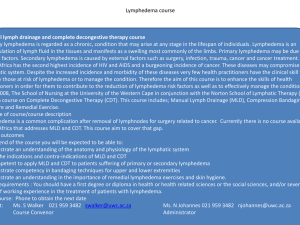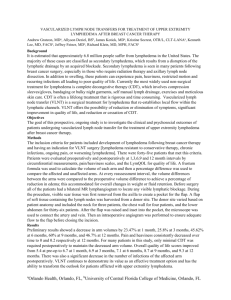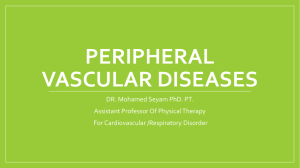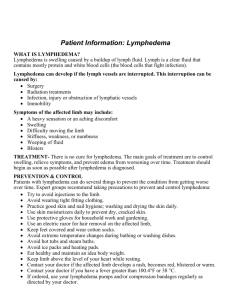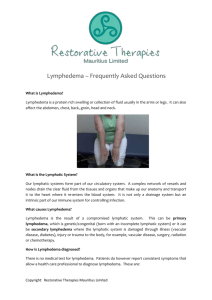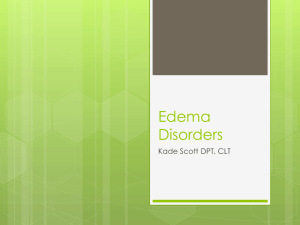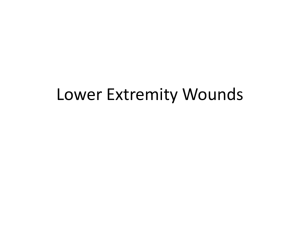Word
advertisement
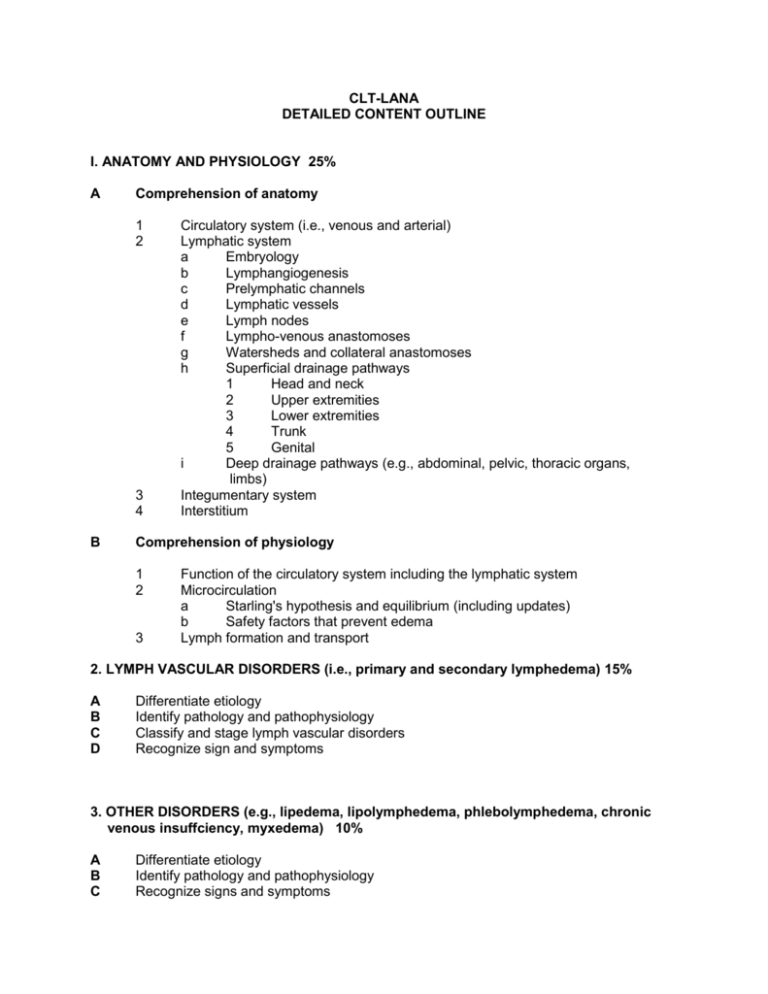
CLT-LANA DETAILED CONTENT OUTLINE I. ANATOMY AND PHYSIOLOGY 25% A Comprehension of anatomy 1 2 3 4 B Circulatory system (i.e., venous and arterial) Lymphatic system a Embryology b Lymphangiogenesis c Prelymphatic channels d Lymphatic vessels e Lymph nodes f Lympho-venous anastomoses g Watersheds and collateral anastomoses h Superficial drainage pathways 1 Head and neck 2 Upper extremities 3 Lower extremities 4 Trunk 5 Genital i Deep drainage pathways (e.g., abdominal, pelvic, thoracic organs, limbs) Integumentary system Interstitium Comprehension of physiology 1 2 3 Function of the circulatory system including the lymphatic system Microcirculation a Starling's hypothesis and equilibrium (including updates) b Safety factors that prevent edema Lymph formation and transport 2. LYMPH VASCULAR DISORDERS (i.e., primary and secondary lymphedema) 15% A B C D Differentiate etiology Identify pathology and pathophysiology Classify and stage lymph vascular disorders Recognize sign and symptoms 3. OTHER DISORDERS (e.g., lipedema, lipolymphedema, phlebolymphedema, chronic venous insuffciency, myxedema) 10% A B C Differentiate etiology Identify pathology and pathophysiology Recognize signs and symptoms 4. PATIENT EVALUATION 20% A Identify relevant elements of patient history 1 2 3 4 5 6 7 8 Edema and prior edema treatment Family history Other medical history Medications/supplements/diet Infections Symptoms Functional status (e.g., Activities of Daily Living (ADL)) Psycho-social B Assess implications of patient history C Recognize potential complications associated with lymphedema 1 2 3 4 D Conduct physical examination 1 2 E 3 4 5 Weight and height Appearance of involved limb(s) and adjacent areas (e.g., deepened skin folds, lobules, discoloration) Clinical signs (e.g., tissue texture, Stemmer's sign) Peripheral pulses Range of Motion (ROM), muscle strength, posture, and gait 6 7 8 Sensation Measurements (e.g., circumferential, volumetric, perometry) Skin integrity (e.g., lymphorrhea, fungal infection) Comprehension of diagnostic tests (e.g., lymphscintigraphy, computerized tomography (CT), magnetic resonance imagining (MRI), venous Doppler examination, and ankle brachial index (ABI)) 1 2 F Medical conditions associated with lymphedema (e.g., angiosarcoma, cellulitis, anasarca, lymphoceles, cancer recurrence) Medical conditions that exclude treatment (e.g., acute congestive heart failure, untreated cellulitis, acute deep venous thrombosis) Medical conditions that may limit treatment approach (e.g., compensated congestive heart failure, peripheral neuropathy, cognitive impairment) Medical conditions that can affect lymphedema treatment outcomes (e.g., arthritis, hypertension, impaired mobility) Purpose Testing procedures Incorporate results of diagnostic tests in treatment planning 5. LYMPHEDEMA MANAGEMENT 30% A Apply principles of complete decongestive therapy (CDT) 1 c 2 3 4 5 6 B Manual lymphatic drainage (MLD) a Effects b Technique concepts (e.g., pressure, direction, sequence) Contraindications Compression bandaging a Effects b Concepts (e.g., materials, gradient pressure, procedure) c Contraindications Compression garments a Effects b Concepts (e.g., types and styles, fitting principles, grades of compression) c Contraindications Decongestive exercises a Effects b Concepts (e.g., variations, approaches) c Contraindications Skin care Education a Activities of Daily Living (ADL) modifications b Compression bandaging c Compression garments (i.e., wear and care) d Exercise e Lymphatic drainage f Nutrition g Precautions and risk reduction h Self-assessment i Skin care j Signs and symptoms of infection k Weight management l Follow-up Recognize principles of adjunct treatments 1 2 3 Intermittent pneumatic compression (IPC) Additional compression devices Additional treatment options (e.g., laser, elastic taping, deep oscillation) C Adapt treatment plan to specific populations and needs (e.g., pediatric, palliative care, wound care) D Recognize factors that affect quality of life (e.g., psycho-social, adherence issues) E Identify best practices (e.g., International Lymphoedema Framework (ILF), International Society of Lymphology (ISL), National Lymphedema Network (NLN)) Updated October, 2013
